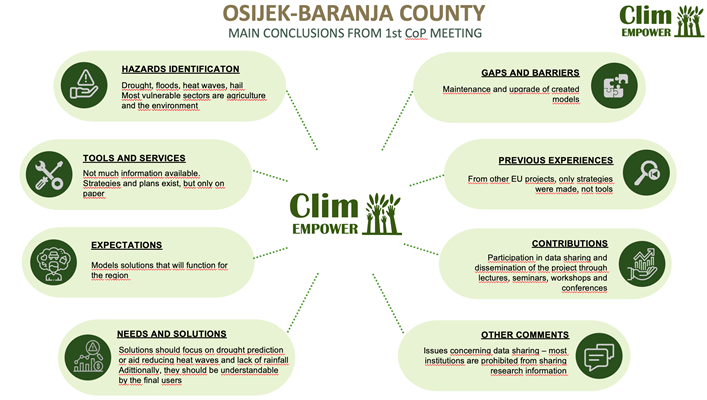Croatia
Osijek-Baranja County is one of the largest counties and is located in Eastern Croatia covering a surface of 4.149 km2, which makes up 7.3 % of the total area of the Republic of Croatia, having 305.032 inhabitants, according to the last population census. The County borders with Hungary to the north and Serbia to the east. It is mainly a lowland surrounded by rivers (especially two very important rivers – the Drava and the Danube), wetlands, and forests (covering 87,885 ha), which created an abundance of reserves, parks, lakes, and ponds that later became protected areas, declared by the Government. Due to this ecosystem, the agricultural land is also extremely fertile, making this county one of the most important agricultural areas in Croatia. It has 212,673.75 ha of arable land; therefore the main economic branch has been food production and agriculture for many decades. With the development of a rich natural heritage and fertile arable land, eco-tourism, wine tourism, rural tourism, family farms offering homemade products, accommodation in authentic households and many other forms of tourism and activities have developed, from which the local communities have certain benefits.
Before holding the 1st CoPs meeting, research was done in the nearby area within Osijek-Baranja County so that all the fields of interests and sectors are covered. It was challenging to gather all the initially planned stakeholders.
The first CoPs meeting of OBZ and OBZ-AZP in Croatia was held on November 6, 2023, at 11 am, in the Council Chamber of Osijek–Baranja County.
The main hazards identified during the CoP that severely threaten agriculture and biodiversity are – in the first place, droughts (35%), followed by floods (30%), heat waves (25%) and hail (10%), which lead to a reduction of food production, desiccation of farming land and wetlands and the disappearing of habitats for many animal and plant species.
In the image below you can find more information and the key points that have been identified:

